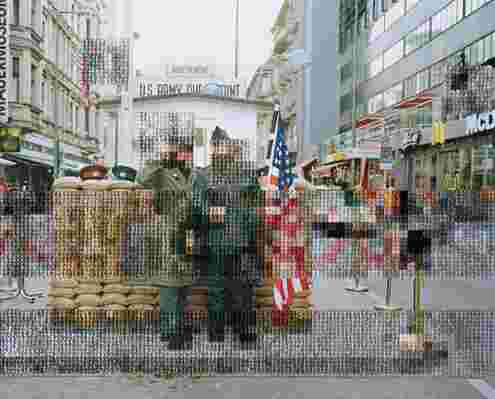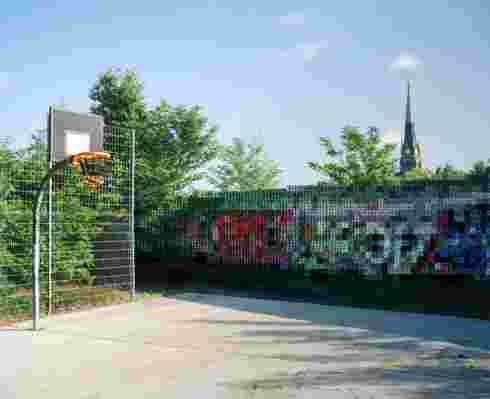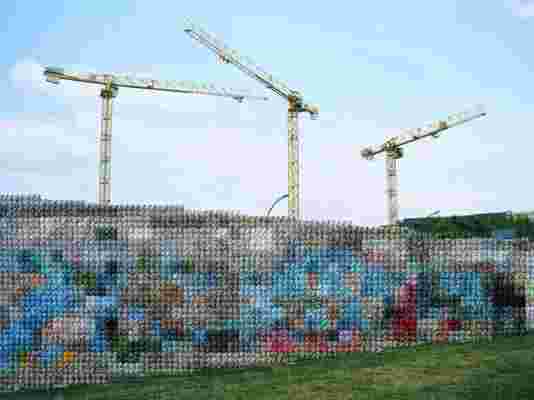


The fall of the Berlin Wall began on November 9, 1989, when an East German official prematurely announced that the government would lift restrictions on travel to West Germany. That weekend, more than two million Berliners streamed across the border, some scaling the wall or smashing it with sledgehammers and pickaxes. Most of the physical wall is gone now, but its lingering impact fascinates Diane Meyer, a photographer in Los Angeles. For her recent series “Berlin” (at Brooklyn’s Klompching Gallery until January 10), she created photographs of places where the wall once stood and then represented it with delicate embroidery—as if all that remained of the barrier were fading threads of memory. Modern Berlin is booming, and sleek new buildings occupy much of the “death zone” between the east and west sides of the wall, but, Meyer finds, “1989 wasn’t that long ago. The wall today is almost ghostlike—even though it isn’t there, you can still feel it.”
